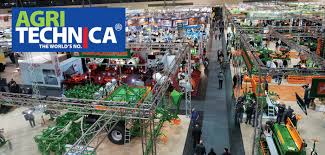Agritechnica preview part 1: The rise of digital agriculture
With Agritechnica, the world’s largest tradeshow for agricultural machinery, right around the corner, the Bazis Agro team is offering pre-show perspectives on trends we’re noticing in the industry based on the research and analysis we conduct on behalf of our agriculture clients.
This year’s theme at the show in Hanover from Nov. 10 to 16 is “Global Farming – Local Responsibility.” The agricultural machinery industry and ancillary functions understand the importance of sustainability and searching for ways to protect our collective environment.
The adoption of digital technologies in agriculture has also been increasing at a rapid pace, as in most other industries because they bring tremendous value for businesses and individuals. In the agricultural industry, there are many digital technologies that fall under the category of “precision agriculture.”
In this piece, we take a look at the digital transformations sweeping through the industry and particularly focus our lens on the adoption of these technologies in Russia.
We categorized each of these technologies based on how prevalent they are in Russia:
- WIDESPREAD (used by a majority of farmers)
- EXPANDING USE (used by an increasing percentage of farmers)
- LOW USE (only a tiny fraction of farmers currently use the technology)
Main Digital Technologies In Precision Farming
1.Field monitoring
Yield monitoring and forecasting — EXPANDING USE
The yield information can be collected either from satellite imagery and drones or from the sensors installed on the farmer’s machinery. These yield sensors can be attached to harvesters or tractors and collect information on things like grain yield, moisture levels, and more, which allows farmers to make better decisions on when to harvest, fertilize, analyze field variability, plan for next season and more.
Weather stations – EXPANDING USE
Weather stations are equipped with sensors of temperature, moisture, sun radiation, wind speed and direction, soil temperature and moisturizing, atmospheric pressure. Weather stations are used for forecasting weather and crop diseases, helping farmers make more effective crop growing decisions.
Harvest mapping – LOW USE
A combine harvester is equipped with a GPS module, a grain flow sensor and a moisture sensor. It helps detect the exact location of the combine harvester, the volume of harvested grain and moisture level in grain. The data is then uploaded to software where a harvest map is created. This technology helps to make better decisions for the next season.
Satellite monitoring – EXPANDING USE
This technology allows to conduct spectral analysis of high resolution satellite images. Based on analysis, one can track negative and positive dynamics in crop development. With this technology, growers can monitor very large territories in different regions, or even in different countries or continents.
2. Data management
Farm management software platforms — LOW USE
Farm management software platforms are just what they sound like — platforms that help farmers manage their crop production. These platforms (i.e. Granular) integrate with hardware devices already used in precision agriculture. The data from these devices are aggregated onto the central platform where they can be processed and analyzed to help farmers make better decisions on how to manage their operations.
3. Variable rate applications (VRA)
Variable rate application in precision agriculture – EXPANDING USE
Variable rate application in precision agriculture focuses on the automated application of materials like herbicides, chemicals, and seeds to landscape. These materials are applied in an automated fashion, based on data collected by sensors, maps, and GPS. This process involves different forms of precision agriculture technologies like multispectral and hyperspectral cameras, satellite imagery, and application machinery on tractors. VRA is one of the main features of precision agriculture.
4. Automation in agro machinery
Farm robots — LOW USE
Robots are used in many industries to automate different tasks. In farming, robots are used for a handful of reasons, but one big use is the automation of weed management. Blue River Technology and Ecorobotix are two companies with robots that use cameras to identify weeds in real time and make decisions on how they should deal with them.
Guidance systems based on GPS — WIDESPREAD
GPS technology is used to guide automated machinery and vehicles in things like auto steering, high navigation and positioning, and more.
Fuel sensors – WIDESPREAD
Growers in Russia point to this as one of the most important technologies. Fuel sensors allow them to control fuel consumption, which impacts the work of employees and prevents fuel theft or fuel draining. An advantage of this technology is that it pays for itself relatively quickly.
Geographic information systems (GIS) – EXPANDING USE
GIS in agriculture is based on different maps united in one system. GIS includes many layers of digital maps – satellite images, landscape relief, road maps, hydrographic maps, maps of settlements etc. GIS also includes such data as local weather conditions, soil condition, area of arable lands during the whole period of monitoring etc.
Next week, we will share additional trends as we prep for Agritechnica.
Are you going to the show? If so, what are you looking for? We would love to hear from you – connect with us at info@bazisgroup.com.

Sorry, the comment form is closed at this time.